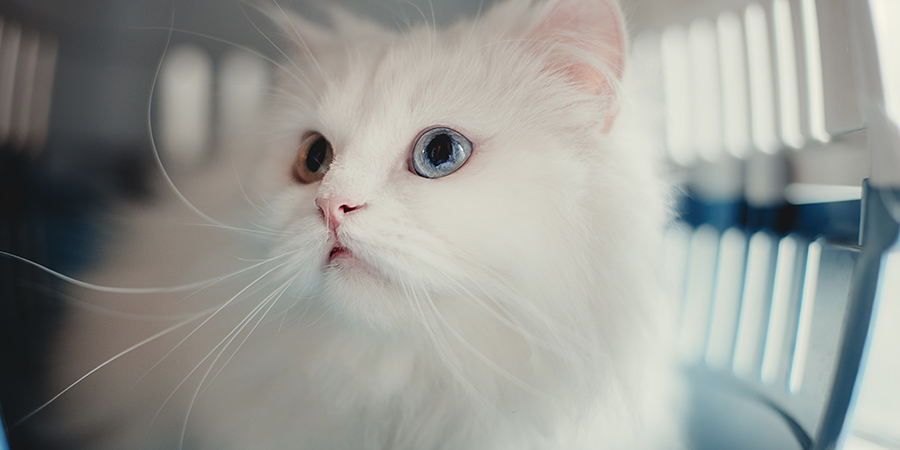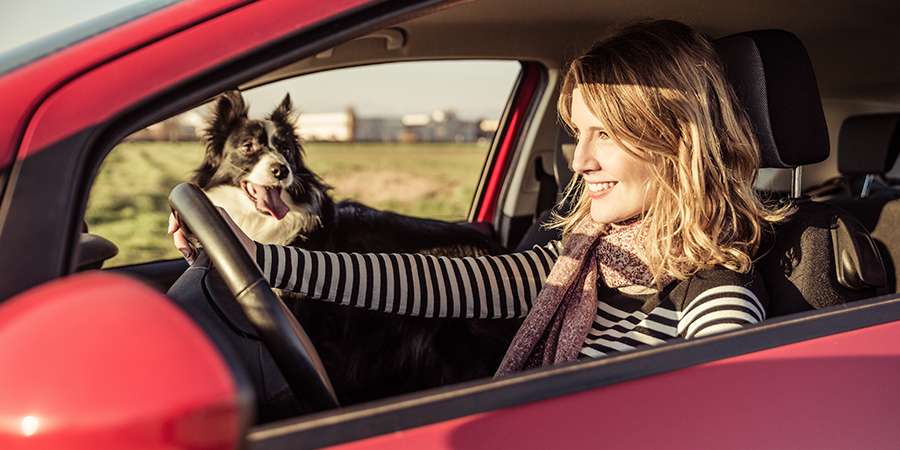Tails
Making pet parenting easy

How to Beat Your Pet's Travel Anxiety
This entry was posted on 2018-03-27.
So, you are all set for your annual holiday complete with the family pooch, but an hour into your trip Rover is panting and whining in the back and you are at your wits end! When traveling with pets, it can be a stressful time for both owner and animal, especially if your dog or cat is unused to long journeys or has had limited experience traveling in a car.
Many pets also associate car drives with unpleasant situations, such as trips to the vet or parlour, which can exacerbate their travel anxiety. Some may also have been thrown from the back seat in a sudden stop or car accident, and situations like having a part of their body, such as, a tail or paw slammed in a car door can increase their anxiety levels.
Signs of travel anxiety
Symptoms of travel anxiety range from mild to severe, and may include:
- Panting
- Pacing
- Shaking
- Vocalisation
- Salivation
- Vomiting
- Refusing to eat or drink
- Not wanting to be touched
- Crouched down
- Urination and defecation
- Running away or hiding from the pet carrier
“Cats especially have very acute hearing and smell senses. Travelling often introduces loud and continuous noises, which prevents them from hearing the small noises that may signal danger; the same with smell. This can lead to high stress levels,” explains Barbara George, a Cape Town based cat behaviourist. “Confinement in a carrier also takes away their natural ability to escape or to change place, causing more stress.”
None of these symptoms make travel fun for you or your pet. So what to do?
Tips to Help Your Pet with Travel Anxiety
Use pet carriers
If you are using a pet carrier make it a ‘normal’ part of your everyday life. Put toys and treats in it and encourage your dog or cat to go inside, this will ensure that your pet feels a level of comfort in the carrier. Make sure the carrier is big enough for your pet to comfortably turn around in but small enough so that they feel secure. To prevent the carrier from bouncing around inside your car and further stressing your pet out, you can secure it with a seat belt.
Give positive affirmations
Allow your dog to associate the car with a positive connotation. To ensure that your dog feels comfortable in the car reassure him by petting and praising him. A good option would be to reward your furkid with a treat or two.
Take it slow. Start by luring your furkid into the car without driving anywhere, this will enable him to become familiar with his surroundings. Once your furkid feels comfortable in the car, take short trips either to the park, beach or play dates and gradually increase the distance of your trips.
It may take a little bit of patience, but it will be well worth it in the end!
Play music
Like humans, studies have shown that playing classical music can help calm animals as can playing sounds from nature.
Give supplements
There are a number of medications available that can assist with your pet’s travel anxiety. Calmeze and Herbal Pet Serenity are often recommended by the experts. “If at all possible avoid tranquilizers,” advises Barbara George. “These tend to numb the body while the mind stays active making the animal more stressed as they cannot move or use their body to signal distress as they would naturally.”
Have a positive attitude
It is a well known fact that animals pick up on their owner’s disposition, so it is vital the owner tries to keep as calm as possible. Pet’s are able to read their owner’s body language, so if you are stressed, your pet will be stressed.
Take regular breaks
It’s vital that you stop regularly to give your pet water or, to relieve themselves and get some exercise. This will also help lessen any stress.
The training process may be difficult at first, but with your kind reassurance your pet will learn not to fear traveling. In fact, it can be an enjoyable experience for both pet and owner!





